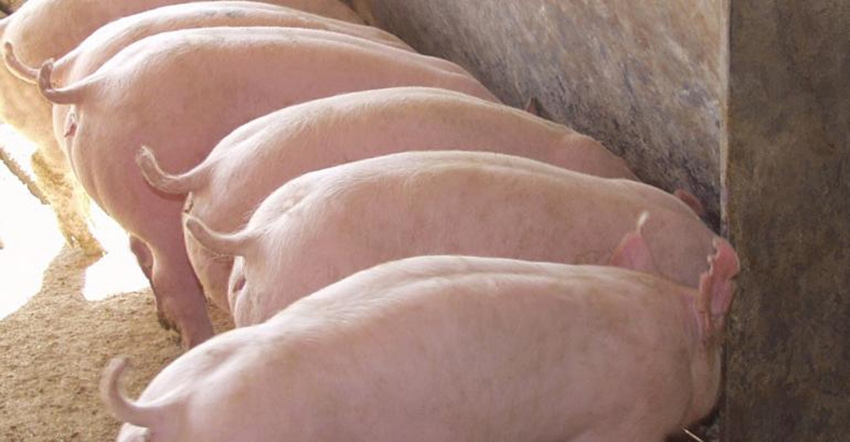Barring a collapse of NAFTA, I’m predicting that hog prices will move higher to substantially higher in the weeks ahead.
February 26, 2018

Looking backward at the market is easy. The hard part, the extremely difficult part, is looking ahead and predicting with any degree of confidence what lies ahead with hog prices. Let’s start with my predictions first, with a discussion second.
One, look for a seasonal decline in hog numbers to trigger a powerful surge in cash hog prices and a powerful uptrend in lean hog futures from now into late-May. Two, this power will be driven by another historical move in fresh belly prices. Three, during this period packer processing margins will be squeezed rather significantly. Four, summer lean hog futures will trade well above $90 before the conclusion (peak) is achieved. And lastly, five, the fall hog contracts will trade higher than what most expect as porcine epidemic diarrhea virus evidence bubbles to the surface.
Increased competition for butcher hogs during January saw the average cash price increase nearly 17%. During this same period (January) wholesale pork prices edged higher by just 4%. Packer processing margins were squeezed from the highly profitable levels experienced in the fall. Cash prices turned weak in February as packers resisted the temptation to bid against one another in a general effort to improve processing margins. Approaching the end of February, it appears the cash market is beginning to bottom out.
Still looking back, during January, as stated above the product (cutout value) increased by 4%. This next fact is extremely important: the belly primal was responsible for a majority of the increase in the carcass during January. Bellies were substantially higher during January, hams slightly higher, pork rib cuts and butts a touch higher with loins lower and picnics sharply lower. At the end of January, hams were quoted at 69 cents. On Feb. 23, these same hams were quoted at 64 cents, down 5 cents or about 7%. Bellies were quoted at $2.18 on Jan. 31 with the Feb. 23 quote at $1.88. Loins finished January at 86 cents and were last quoted at 93 cents. Butts were quoted at 99 cents at the end of January with their last quote at $1.01. So, you can see that processing cuts, hams and bellies, weakened during February whereas the retail pork cuts held fully steady to slightly higher. The value of the pork carcass on Jan. 31 was $82.73 compared to the Feb. 23 quote of $79.48.
My meat sources have told me that hams have experienced some slowdown in export business during February. My sources are also telling me that bellies have been experiencing some pushback, some resistance to prices as foodservice demand slowed in late-January and into February. It is worth noting that demand for both cuts appears to be returning as prices eased lower in the first half of February. Recent cold storage data confirmed a large build in ham stocks during January which is normal ahead of the Easter drawdown season. The report also confirmed a slight build in belly frozen stocks. Many in the trade want to call the belly frozen stock number bearish at 44.6 million pounds because this figure is more than three times as large as last year’s figure. Last year at this time belly stocks were record small at just 13.99 million. Compared to the five-year average belly stock figure for the end of January, current frozen belly stocks are 12% lower than the five-year average of 50.3.
The importance of the U.S. economy and resulting impact on foodservice demand for bacon can’t be understated. Current economic forecasts suggest a robust U.S. economy with 2018 gross domestic product growth pegged at 2.8%. Recent indications by the Federal Reserve suggest that current growth projections may be too low. Indeed, if this is accurate, it’s highly likely that foodservice demand will drive belly prices sharply higher at some point during the spring/summer. Exports are key moving forward and there’s no reason to expect U.S. pork exports to slow. Mexico is our largest export customer increasing their take during 2017 by 12% and representing more than 32% of total exports. Second is Japan which saw only a slight increase during 2017, but Japanese pork exports represent over 20% of total exports. Canada is third with South Korea our fourth largest export customer. China and Hong Kong is fifth. China likely represents our biggest potential for change (increases) in pork export business during 2018.
The biggest hazard to the livestock markets is the renegotiation of the North American Free Trade Agreement. At this time, the markets don’t appear to be nervous and overly concerned about a possible failure in these trade discussions.
So, mark it down, barring a collapse of NAFTA, I’m predicting that hog prices will move higher to substantially higher in the weeks ahead. The powerful move upward, if indeed it occurs, will be led by a dramatic move higher in fresh belly prices fueled by strong economic U.S. growth.
About the Author(s)
You May Also Like





